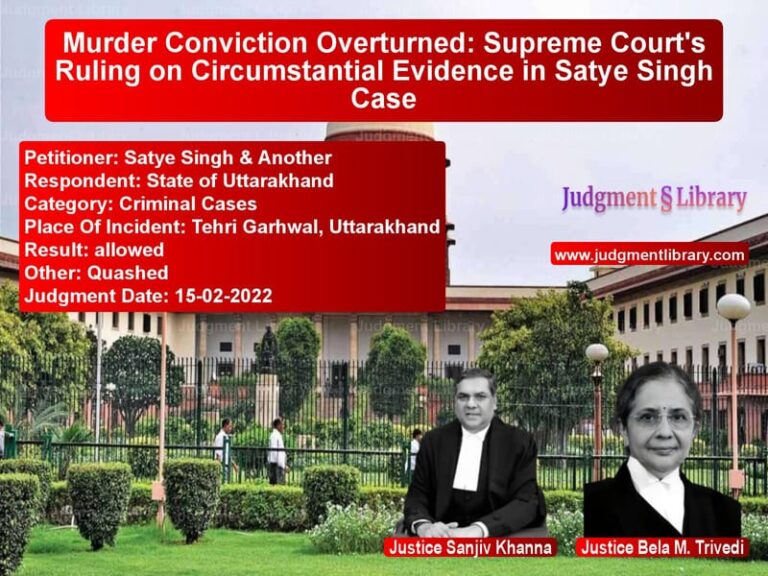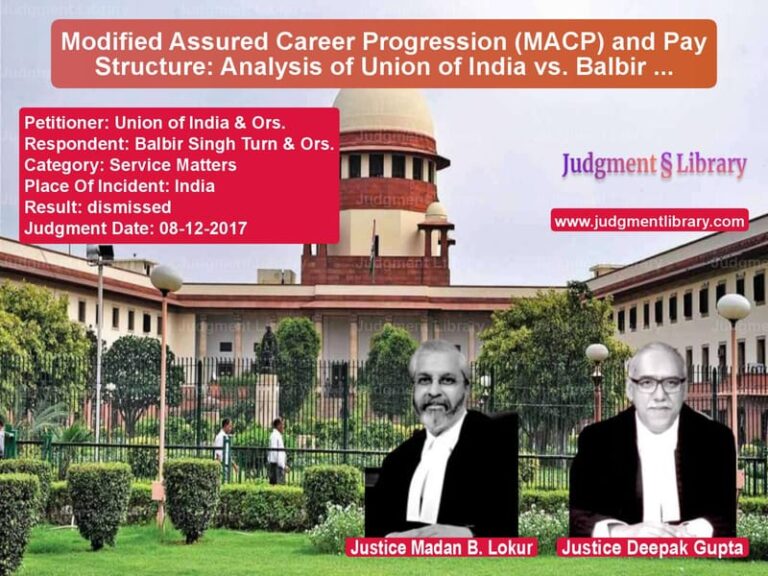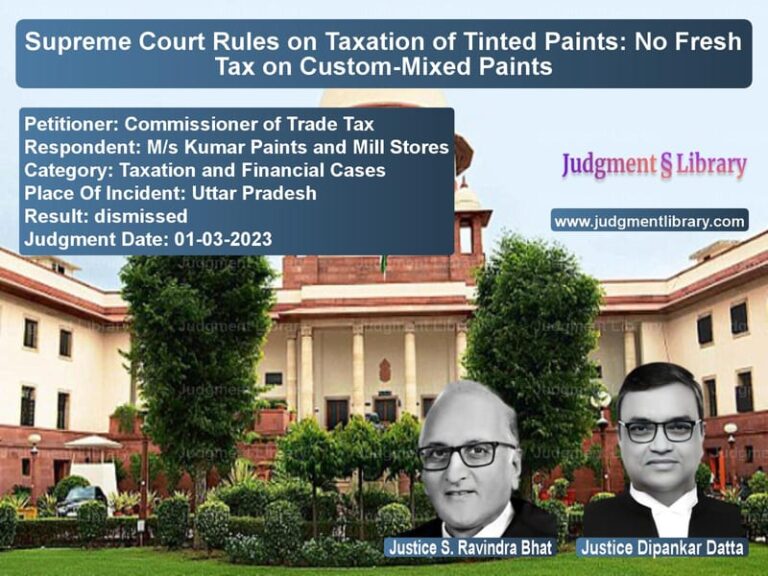Motor Accident Compensation: Supreme Court Increases Award for Victim’s Family
The Supreme Court of India, in the case of Ramrao Lala Borse and Another vs. New India Assurance Company Ltd. and Another, ruled on the rightful compensation for a road accident victim’s family. The case involved a tragic bus-truck collision that resulted in the death of a schoolteacher, Deepak. The ruling provided clarity on the computation of compensation under the Motor Vehicles Act, 1988, emphasizing the role of age, salary, and future prospects in determining the award.
Background of the Case
The case arose from a road accident on 19 February 2006, where a truck collided with a luxury bus on the Mumbai-Agra highway. Deepak, a 29-year-old Assistant Teacher, was among the passengers and suffered fatal injuries. His parents filed a claim under Section 166 of the Motor Vehicles Act, 1988, seeking compensation from the truck’s owner and insurer.
The Motor Accident Claims Tribunal (MACT) found the truck driver negligent and awarded a compensation of ₹61,55,000. However, the High Court of Bombay reduced this amount to ₹26,45,000, applying a different methodology. The claimants appealed to the Supreme Court, challenging the reduction in compensation.
Key Legal Issues
- Was the High Court correct in applying a multiplier of 7 instead of 17?
- Should future prospects have been considered while calculating the compensation?
- Did the High Court err in reducing the awarded amount?
Arguments by the Petitioners (Claimants)
The petitioners, who were the parents of the deceased, argued:
- The High Court wrongly applied a lower multiplier of 7, considering the average age of the parents instead of the victim’s age.
- The deceased was a schoolteacher and would have become a permanent employee, entitling him to higher salary benefits.
- Future prospects should have been accounted for, in line with Supreme Court precedents.
Arguments by the Respondents (Insurance Company)
The insurance company defended the High Court’s ruling, stating:
- The compensation amount determined by the High Court was fair and just.
- The deceased was employed on a temporary basis, with no certainty of future salary increases.
- The multiplier was correctly chosen, as the compensation is meant for the victim’s dependents.
Supreme Court’s Observations
The Supreme Court reviewed the legal principles involved in motor accident compensation and referred to key precedents, including:
- National Insurance Co. Ltd. vs. Pranay Sethi (2017): Established guidelines for calculating compensation, including future prospects.
- Sarla Verma vs. Delhi Transport Corporation (2009): Laid down the appropriate multipliers based on the deceased’s age.
The Court observed:
- “The High Court erred in applying a multiplier of 7 instead of 17, given that the deceased was 29 years old.”
- “An addition of 50% towards future prospects is warranted, following the precedent in Pranay Sethi.”
- “Deductions for personal expenses should be 50% as the deceased was a bachelor.”
Supreme Court’s Judgment
The Supreme Court ruled in favor of the claimants and restored the compensation awarded by the MACT. The final calculation was as follows:
- Monthly income: ₹40,000
- Annual income: ₹4,80,000
- Future prospects (+50%): ₹7,20,000
- Deduction for personal expenses (-50%): ₹3,60,000
- Multiplier: 17
- Total compensation: ₹61,90,000
The Supreme Court directed that this amount be paid with interest at 9% per annum from the date of filing the claim.
Implications of the Judgment
This ruling sets a crucial precedent for motor accident compensation cases. It affirms that:
- The victim’s age, not the dependents’ age, determines the applicable multiplier.
- Future prospects must be considered in compensation calculations.
- Courts should ensure just compensation rather than arbitrarily reducing awards.
Conclusion
The Supreme Court’s decision in Ramrao Lala Borse vs. New India Assurance Co. Ltd. underscores the need for fair and accurate compensation for accident victims. By reinstating the higher compensation amount, the Court reinforced the importance of using standard legal principles in motor accident claims, ensuring that victims’ families receive their rightful dues.
Don’t miss out on the full details! Download the complete judgment in PDF format below and gain valuable insights instantly!
Download Judgment: Ramrao Lala Borse an vs New India Assurance Supreme Court of India Judgment Dated 19-01-2018.pdf
Direct Downlaod Judgment: Direct downlaod this Judgment
See all petitions in Road Accident Cases
See all petitions in Compensation Disputes
See all petitions in Motor Vehicle Act
See all petitions in Judgment by Dipak Misra
See all petitions in Judgment by A M Khanwilkar
See all petitions in Judgment by Dhananjaya Y Chandrachud
See all petitions in allowed
See all petitions in supreme court of India judgments January 2018
See all petitions in 2018 judgments
See all posts in Accident Cases Category
See all allowed petitions in Accident Cases Category
See all Dismissed petitions in Accident Cases Category
See all partially allowed petitions in Accident Cases Category







